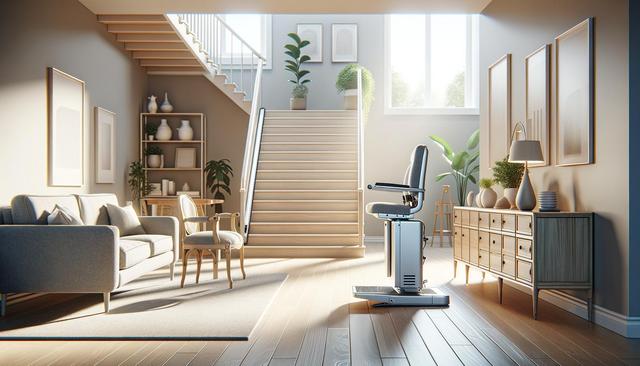
Enhancing Mobility at Home: Stairlifts for Seniors
Understanding the Purpose of Stairlifts
As people age, reduced mobility can make everyday tasks more challenging, especially when it comes to climbing stairs. Stairlifts are designed to address this issue by providing a safe and convenient way for seniors to move between different levels of their home. These devices are motorized chairs that glide along a rail mounted to the staircase, allowing users to sit comfortably and travel up or down without strain or risk of falling. For many seniors, stairlifts can be a crucial step toward maintaining independence and staying in the home they love.
Stairlifts are particularly beneficial for individuals with conditions like arthritis, limited joint flexibility, or balance problems. By reducing the physical effort involved in using stairs, these devices also help prevent injuries. They are suitable for various types of staircases, including straight, curved, and even outdoor steps, making them a versatile accessibility solution.
Types of Stairlifts Available
There are several types of stairlifts to consider, each designed to accommodate different home layouts and user needs. The most common types include:
- Straight stairlifts – Ideal for staircases with no curves or landings.
- Curved stairlifts – Custom-built to fit staircases with bends or intermediate landings.
- Outdoor stairlifts – Designed with weather-resistant materials for outside stairs.
- Standing/perch stairlifts – Suitable for users who have difficulty bending knees or sitting.
Each model comes with features that enhance usability, such as remote controls, swivel seats for easier dismounting, and safety sensors that stop the lift if an obstacle is detected. When choosing a stairlift, it’s important to assess both the physical layout of the home and the specific needs of the senior using it. Consulting with a professional installer can help ensure the right fit and functionality.
Safety and Comfort Features
Modern stairlifts are equipped with numerous safety and comfort features that make them a reliable choice for seniors. These include seat belts, speed regulators, and backup batteries that allow the lift to operate during a power outage. Additionally, most stairlifts have soft start and stop mechanisms, preventing jerky movements that could cause discomfort or instability.
Comfort is also a key consideration. Many models offer padded seats, adjustable armrests, and footrests to ensure that the ride is smooth and pleasant. Some units can be folded away when not in use, keeping the staircase accessible to others in the household. These thoughtful features make stairlifts not only safe but also user-friendly for everyday use.
Installation and Maintenance Considerations
Installing a stairlift typically involves securing a rail to the staircase and attaching the lift unit itself. Most installations can be completed within a day and do not require significant structural changes to the home. In cases where staircases are complex or narrow, custom solutions may be necessary, which could influence the time and cost involved.
Regular maintenance is essential to keep a stairlift in good working condition. This includes periodic checks, lubricating moving parts, and ensuring that batteries are functioning properly. Many suppliers offer service packages that include annual inspections and prompt repairs if needed. A well-maintained stairlift can last for many years, making it a worthwhile long-term investment in home accessibility.
Cost and Financial Assistance
The cost of a stairlift varies depending on the type, features, and complexity of the installation. While straight stairlifts tend to be more affordable, curved and custom models can be more expensive due to the precision engineering required. However, there are options available to help manage the expense, such as:
- Renting a stairlift for temporary use.
- Exploring financing plans offered by suppliers.
- Checking eligibility for government assistance or mobility grants.
- Considering refurbished models for a more budget-friendly option.
Understanding the total cost—including installation, maintenance, and potential long-term needs—is important when deciding to invest in a stairlift. Seniors and their families should take time to compare options and speak with reputable providers to find a solution that fits their budget and lifestyle.
Conclusion: Supporting Independent Living
For seniors aiming to maintain their independence and safety at home, stairlifts offer a practical and effective mobility solution. They reduce the physical demands of climbing stairs and help prevent falls, making everyday life easier and less stressful. With a range of models and features available, stairlifts can be tailored to individual needs and home environments, providing peace of mind to users and their families. Whether for long-term use or temporary recovery, a stairlift can play a valuable role in supporting aging in place with dignity and comfort.